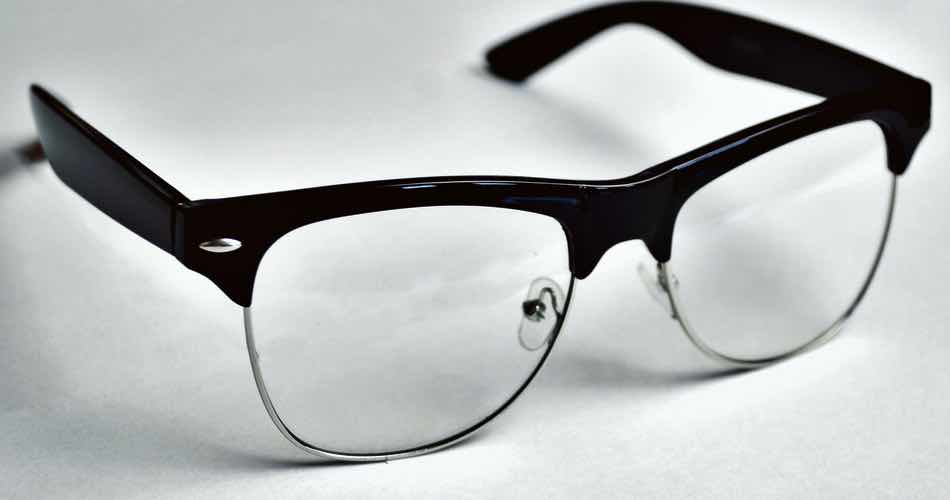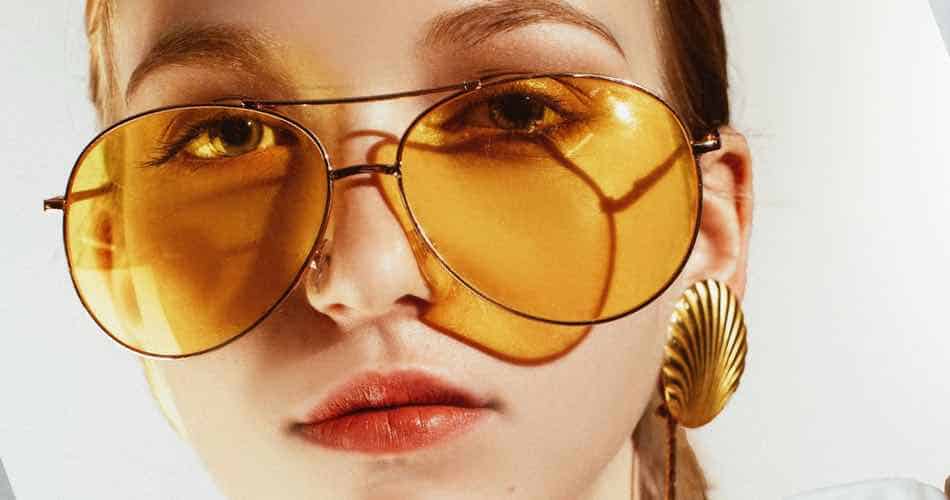When you look at your transparent lenses in your glasses and ask yourself why they cast a shadow you are exactly in the right place. After reading this article you will know why you can see a shadow.
When the light hits the surface of the lenses approximately 4 % of the light is reflected when you wear standard CR39 lenses. Those lenses have a refractive index of 1.5. The higher the index the more light will be reflected on the lens’s surface. Thinner lenses have a higher index. Every reflection at the surface causes a decrease in light intensity. When the light intensity is reduced at a certain spot you can see a shadow.
On top of that when we talk about the lens materials of lenses in spectacles the transmittance is not the same for every wavelength in the light spectrum. Different wavelengths will be absorbed more dependent on the lens you bought with your glasses in combination with the coatings and filters. Like a blue light filter.
The reflection of 4% on the lens can be found on a lens without an anti-reflective coating on it. With an anti-reflective coating, the reflections on a lens can be roughly reduced to 1%.

Do Some Lenses of Spectacles Cast Bigger Shadows Than Others?
Higher prescription glasses usually cause bigger shadows than the ones with less lens power. When light passes through the lens, it moves the light due to prismatic effects and causes the light rays to diverge or converge depending on your prescription.
So when the light hits the lens surface and under the lens, the light rays get distributed on a bigger surface less light intensity is found on the same surface as without the diverging effect. In short, some areas get more light – some get less. Were the light is less present a shadow appears.
A formed shadow of spectacles is less noticeable with a good anti-reflective coating. The coating leads to fewer reflections and the light better getting into the lens and out. This way the loss of light intensity is reduced and the shadow minimized. Due to the nature of lenses with a changed refractive index compared to the medium, it is in (in most cases air) the lens will always have some sort of reflections and therefore loss of light intensity. Despite the absorption of the lens material itself.
Which Glasses Do Not Cast Shadows?
Every eyewear will cast shadows. Even the clear ones. Every object will cast shadows. The nearer the frame sits to your face the less the shadow will be visible as much. But you will not get rid of it entirely. Typically plastic glasses frames without nose pads in combination with an anti-reflective coating will cause minimal shadows in your face.
Some eyeglasses cast shadows due to the shape of the lenses or the frame surrounding the lenses. When you want to avoid unfavorable shadows on your face with the new glasses test them in different lighting conditions. The most critical in most cases is when one spotlight shines from above on you.
Even with a rimless frame, a shadow can be seen on your nose and on your cheeks. The shadow with a rimless frame will get a little less dominant when the sides of the lenses will get polished. But still, the absorption, as well as the reflections on the lens’s surface, will lead to a shadow.
In the paragraphs above we only talked about the front and the back surface and the optional anti-reflective coating on them. However, on the sides of the lenses, you will have no antireflective coating. This way especially with higher prescriptions the shadow will be still visible because no coating will be found on the sides of the lenses which would make the lenses more transparent.

When the lenses do get as big so they will have minimal space to your cheeks fewer shadows will be visible. In the paragraphs above I mentioned the higher index lenses will have more reflections on their lens surface. While this is true when you buy them without an antireflective coating (which you should never do) the lenses also come with something you do not have in mind.
Extremely thin lenses have a slight tint. In the image above I exaggerated a bit with the light sunglasses tint but some of my customers in my optical store notice the slight tint right away which comes with super thin lenses. Those slightly tinted lenses have a minimal brown or yellow dye to them.
With this tint in the lenses, a shadow on your cheekbones usually is more noticeable with the slightly thicker materials without the minimal tint.
I wish you a great day.
